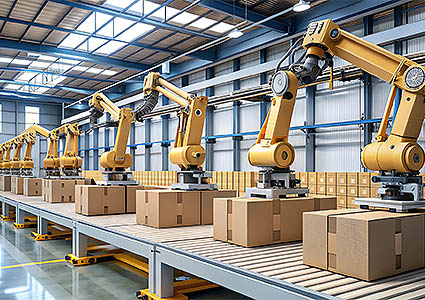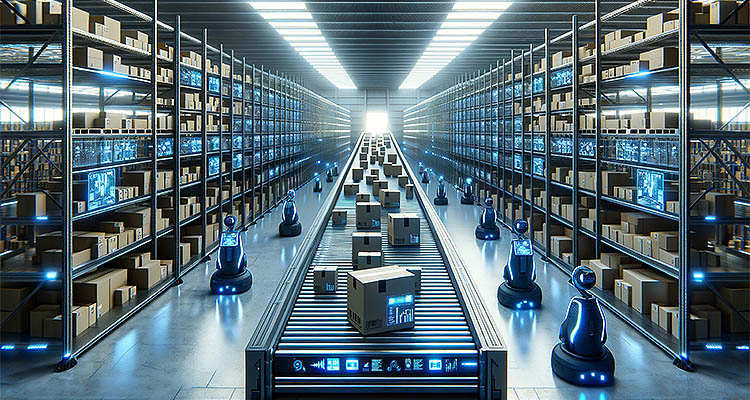How technologies like automation and AI are shaping the future of fulfilment
As artificial intelligence (AI) and related technological advancements continue to infiltrate every industry and aspect of our lives, global supply chains are no exception. In addition to the advancements made in technology, the demand and expectations to compete on speed and service levels is continuing to pour pressure on already weakened fulfillment center processes and technology stacks.
In many modern fulfillment centers, roadblocks often have less to do with a lack of resources, but rather a driving force that helps them to work seamlessly together. There is no single piece of technology that will transform fulfillment center operations, so putting the right orchestrator in place to make each of them work together is imperative to reaching new peaks and exceeding consumer expectations. A group of instruments only becomes an orchestra when led by a skilled conductor and in the same way, seamless orchestrating software is what makes beautiful fulfillment music.

Challenges become growth drivers
As is often the case, industry challenges have become the drivers for growth in fulfillment center automation. Some of these contributing factors include:
Consumer expectations. With the impact of the Amazon effect on the omnichannel business model and the subsequent boom of e-commerce during the Covid-19 pandemic, retailers were forced to adapt while meeting the needs of e-commerce shoppers. As the obvious effects of the pandemic dissipated, e-commerce trends remained high, and demand continued to put pressure on previously struggling supply chains not capable of servicing today’s demands for speed.
Labor shortages and low unemployment. Due to an increase in demand for warehouse labor and low supply, global supply chains are facing significant labor shortages. According to a 2022 report by MHI and Deloitte, about 57 percent of respondents said that hiring and retaining qualified workers was the biggest challenge they faced, followed closely by talent shortages.
Technology investment and integration. Advancements in technology have become integrated enough in our everyday lives that professionals are looking for ways to apply them in warehouse and distribution center operations. The 2024 MHI Annual Industry Report found that 84 percent of respondents plan to boost investment in AI technologies in the next five years. Over 55 percent of respondents said that they have increased supply chain investment, indicating that those investments are focused on long-term success by leveraging technology.
Investor interest. Early adopters are excited and motivated about being on the cutting edge of bringing automation into fulfillment center operations. This surge in automation is boosting annual growth of more than 15 percent in robotics, which is expected to cause the ecosystem to more than double in size by 2027.
Leveraging automation in software
To successfully leverage automation in software and integrate workflows run by highly intelligent software, it will be important to stick to the basics: prioritizing process, then people, then technology. Resources should be treated equally and fed in real-time with high rates of work to accomplish maximum efficiency. Doing the job correctly means that your resources get more to do; work begets work and avoiding dormancy is key.
Focusing on built-in flexibility and data driven decision-making will be important to make sure operators are injecting automation only where it makes sense, avoiding redundancy and considering scalability. Similarly, caution should be taken against misapplication or technologies that are not fully integrated. This is where a systems integrator like VARGO® sets itself apart with experts that not only develop processes but have extensive experience in production environments.
The future of automation
 While we have seen a significant boom in the growth of technology, we are not yet at the crest of the wave. Some things to be on the lookout for are:
While we have seen a significant boom in the growth of technology, we are not yet at the crest of the wave. Some things to be on the lookout for are:
Siloed solutions. We can expect to see new technologies coming to market become increasingly more siloed as part of the process rather than the entire operation. With this, vendors will be able to own a space or function.
Growth in systems integration. With that piece-by-piece approach, it will be crucial for cutting edge companies to engage systems integrators with applied knowledge to see the full impact of their investments.
Evolution of legacy methods. Successful systems integrators will help organizations remove the restrictions still in place from legacy methods and unleash results with new processes and software that supports them. With this evolution, solutions that were previously too expensive will become more attainable as vendors adapt pricing models.
Becoming leaner. To keep up with the Amazon effect, cutting out waste will be a major focus, and businesses must focus on lean efficiency so that the goals of the operation become an inevitable side effect. With the help of an expert systems integrator, faster order cycle times and increased order accuracy are within reach.
Maintaining flow. The addition of new technologies also comes with the challenges of maintaining flow alongside new functions. Building flow needs to seamlessly alternate between expediency during critical shipping windows, and efficiency when shipments are not the priority. Automating the human decision processes and assignment of resources will be key to a successful operation.
Art Eldred is the Vice President and Growth Officer at VARGO®, a proven integrator of intelligently designed fulfillment solutions across all work resources. As a supply chain professional and member of the executive board, Art oversees the company’s customer-centric strategy, as well as optimizing business partnerships and vendor relationships.
